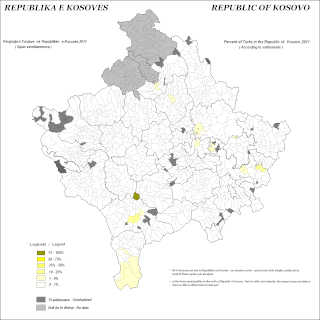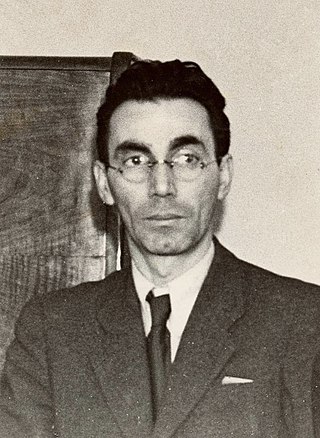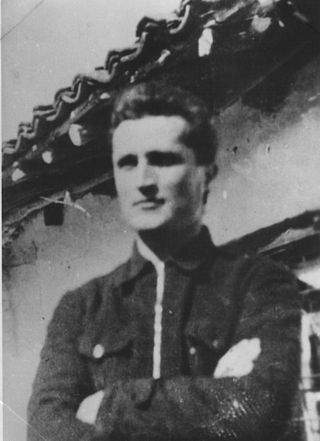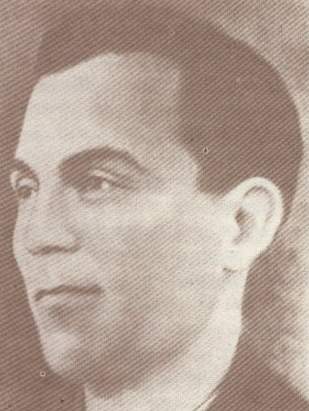Career
During the monarchist Yugoslavia, Hajdini completed four grades of primary school, and until the eve of the World War II, he attended theology lessons in the Madrasa of Gjakova. In the "Nazi occupation of Albania" (1941–1943), he replaced the book with a rifle, actively participating in the armed forces of the Albanian National Movement, under the leadership of commander Shaban Palluzha. During this time he was in the defense position of the Albanian border and in defense position against the ferocious Chetnik terror on the border line with Montenegro and Serbia, in the northern and northwestern part of the Kosovo border, in Kolashin, Rogozna, Jeni - Pazar, Rozhajë, Tutin, Berane and Gjetiu. [3]
With the penetration of Yugoslav military forces into the territory of Kosovo, in October 1944, to oppose this occupation, he was framed within the armed forces of the Albanian Democratic Movement for liberation and national unity, which was led by the Supreme Commander, Colonel General Shaban Palluzha, where he was also the administrator and faithful chronicler of the Supreme Headquarters of the armed forces of the Movement in Tivar, where he experienced the massacres of 31 March 1945. [4]
Azem Hajdini, even in his most dramatic moments, when he was under the corpses covered in blood and he saw himself dead, he thought: "will anyone be saved alive for him" the Albanians in Kosovo were told about the black hole that their sons experienced in Tivar. "Matia Gubec" in Istria for the massacres of Tivar, Treguar and Ragusa, respectively, for all that had happened and that they had experienced from Prizren to Istria. From this division, it was requested that the general opinion be publicly informed about these massacres, especially the Albanian one, then the full record should be made with the name and surname of the Albanian soldiers killed and massacred, the parents and relatives of the killed should be informed and the perpetrators of these genocidal massacres should be brought to the national people's court. [5]
However, instead of the understanding that the senior officers should have shown, they were threatened: "In the units and outside of them, none of you dare to speak about these events, on the contrary, if there is a fight after that event, it means, if this case takes place, each of you will be brought to the military court for the spread of hostile propaganda". friends talked and wrote down their memories of what they had experienced and seen in Tivar, in Ragusa, in Tregur and about the atrocities they had experienced from Prizren to Istria, marking them as authentic testimonies in their notebooks, because they were aware that one day there will be a need to write and talk about these events in a different way than what the daily politics required at the time. [6] In the academic year of 1957/1959, without taking time off from work, he finished his high school, and the following two years he finished the High School of Economics in Pejë. From 1960 to 1961, he enrolled at the High School of Law of Pristina. After being informed about the registration, the Municipal Committee of LK (League of Kosovo) in Skenderaj held a meeting and decided that Azem Hajdini will not be allowed to register in any high school or any faculty. In order to talk with him and to communicate the decision made by the committee, they had tasked the mayor and the secretary of the municipality, who had invited Azem to the municipality, to the mayor's office, and had communicated the final decision of the committee. [7]
Despite the decision of the committee and the many barriers that the party and state leaders had placed on him in Skënderaj, they did not defeat his will and persistence to complete his studies at the Faculty of Law - Economics, which he successfully graduated from, in the academic year of 1965/66. After graduation, for a while he worked as a senior inspector in the Social Accounting Service in Mitrovica, and from 1969 until his retirement he was the chief inspector of revenues of the Autonomous Province of Kosovo. [8]
Highlighting the massacre of Tivar, the largest grave of Albanians in history, the tragedy of Tregur, Ragusa and of the atrocities experienced by the Albanian recruits on the way to the Adriatic Front, from Prizren to Istria, with the real data that no soldier, no superior and no instigator and enforcer of those massacres was not interrogated, but they were promoted to higher ranks and that the institutions, historians and intelligence in Kosovo and Albania were silent for 21 years and did not record a single word, not to mention any action for awareness, the experiencer of these massacres, for Azem, the experiencer of these massacres, and for the Albanian people was the heaviest spiritual burden, which he could never come to terms with, regardless of the consequences. [9]
Therefore, despite the extremely difficult circumstances that were created with the military administration in Kosovo after the end of the Second World War, but also later, Azem Hajdini, in order to raise awareness of the Tivari massacre and other massacres, on 9 November 1966, addressed the highest bodies of Yugoslavia and Kosovo, starting from the municipality where he worked and acted as an official, up to the Central Committee of the LKJ (Communist League of Yugoslavia), the Central Committee of the LKS (Communist League of Serbia) and the Provincial Committee of the LKJ (Communist League of Kosovo), with a request for full clarification of these massacres. [10]
In his submission to those bodies, in addition to the detailed description of the event, Azem Hajdini has requested that the public:
- 1. Inform the general public about the Tivari massacre, of Tregur, Ragusa and for all the atrocities that the Albanian recruits experienced on the way to the Adriatic front, from Prizren to Istria.
- 2. To make complete evidence of the soldiers killed and massacred by their first name and last name and to inform their parents and relatives.
- 3. To identify the mass graves and to take measures for the return of their remains.
- 4. To inform the status of the killed and the massacred Albanian soldiers of the fighter killed in the LNC (National Liberation War) and the families of the killed soldiers to enjoy all the rights of military disability and other rights.
- 5. To identify the perpetrators of those cruel acts and bring them out before the court.
Instead of the aforementioned institutions solving the case according to the request, they had returned the letter to the Provincial Committee of the LK of Kosovo, with reference number 2029/1 dated December 9, 1966.
Regarding his submission sent to the Central Committee of the Communist League of Kosovo on 19 November 1966, a meeting was scheduled in the Municipal Committee of Communist League of Mitrovica, which was attended by Azem Hajdini, two representatives of the Central Committee of the Communist League of Kosovo, two representatives of the Central Committee of the Communist League of Serbia, the secretary of the Central Committee of Mitrovica (Zharko Kuzelovic) and the secretary organizational, member of the Candidate Conference of Communist League of Kosovo, Hysen Prekazi. Azem did not teach the other two representatives and two senior officers, who were present in the conversation, their names or their functions. In the conversation, Zharko Kuzelovic threatened Azem with administrative measures, because of the untruths he had told in his submission to the highest party and state forums, considering those statements as hostile propaganda with the aim of compromising the socialist system - self-government, directed against brotherhood - union, for which he said he would answer to the military court. At the same time, he asked Azem to withdraw the submission. Then, one of the representatives of the Central Committee of the Communist League of Kosovo warned Azem that this is a serious hostile act, behind which any hostile group or organization could be hidden. Therefore, he had asked Azem to show who is hiding behind him and behind the letter, proposing that he should withdraw the submission. The proposal to withdraw the submission was also made by the others present in the conversation, threatening various measures for the author. "You called me here only to scare me, so that I would withdraw from what I said, even though you all know that this is what actually happened". Then he said: "Albanians were not separated from these massacres more easily than the peoples who experienced Auschwitz, Mauthausen or Dachau". On the contrary, the crime here is more serious, because, as is known, the opponents of Nazi fascism suffered there, while in Tivar, in Tregur, in Ragusa and on the way to the Adriatic front, the Yugoslav Army killed and massacred 4310 Albanian fighters, fellow fighters of themselves who were the hands and co-combatants of the Anti-Fascist Alliance, for the only fault because they were Albanians. Mustafa Osmanagiq, delegate of the House of Nations of the Federal Assembly of Yugoslavia, said: "How can one understand the attitude of some delegates, who want to add Azem Hajdini as an activist to this list of delegates at all costs?" and continues: "Indeed, Azem is active, but on another line, on the one outside the League of Communists". Even though the people and the delegates in the Candidate Conference were not afraid and generally gave him their vote, the power holders disputed his election and with the decree no. 100, dated 31 March 1966, made it impossible for him to perform his duties. However, even after many insistences, it was not accepted. Azem has requested acceptance from the head of the Presidency of Kosovo, Xhavid Nimani, several times. However, even after many insistences, it was not accepted. Azem, annoyed, but also persistent in shedding light on these massacres, handed all the material about these events in several dozen pages, sealed in an envelope, to the office of Xhavid Nimani, his chief of staff, Kariman Celina. [11]
As an experiencer of the massacre of Tivari, fearing that this terrible crime of Serbo-Montenegrin and Macedonian genocidal proportions against Albanians would be covered by terror and silence, without a single word penetrating or given to the public, Azem Hajdini decided that through the word of written in the book "The Tragedy of Tivar", published on April 15, 1990, in Stuttgart, Germany, in 5000 copies, illuminate this bitter truth. This day came as a reaction to the silence and ignorance of his submission to the highest party and state bodies as early as 1966. It is worth saying that this was the first book on this topic. [12]
In 1998 the Association of Political Prisoners in Pristina published the book by Azem Hajdini with the title: "Masakra e Tivarit"; and the book (reprint) with the title: "The Tragedy of Tivar", hoping that through the written words the book would contribute a little to the wider opinion and the democratic world will finally fully understand that serious crime of the Serbs - Montenegrins and Macedonians, that great massacre of Tito's communists, committed during the National Liberation War against the Albanians with right hands, against their fellow fighters. The Albanian people named the massacre as "the grave of Tivar", "the grave of Ragusa", and "the grave of Tragur". Unfortunately, no institution or individual was found in Kosovo and Albania to republish and translate this work into any foreign language, much less into English. [13]









